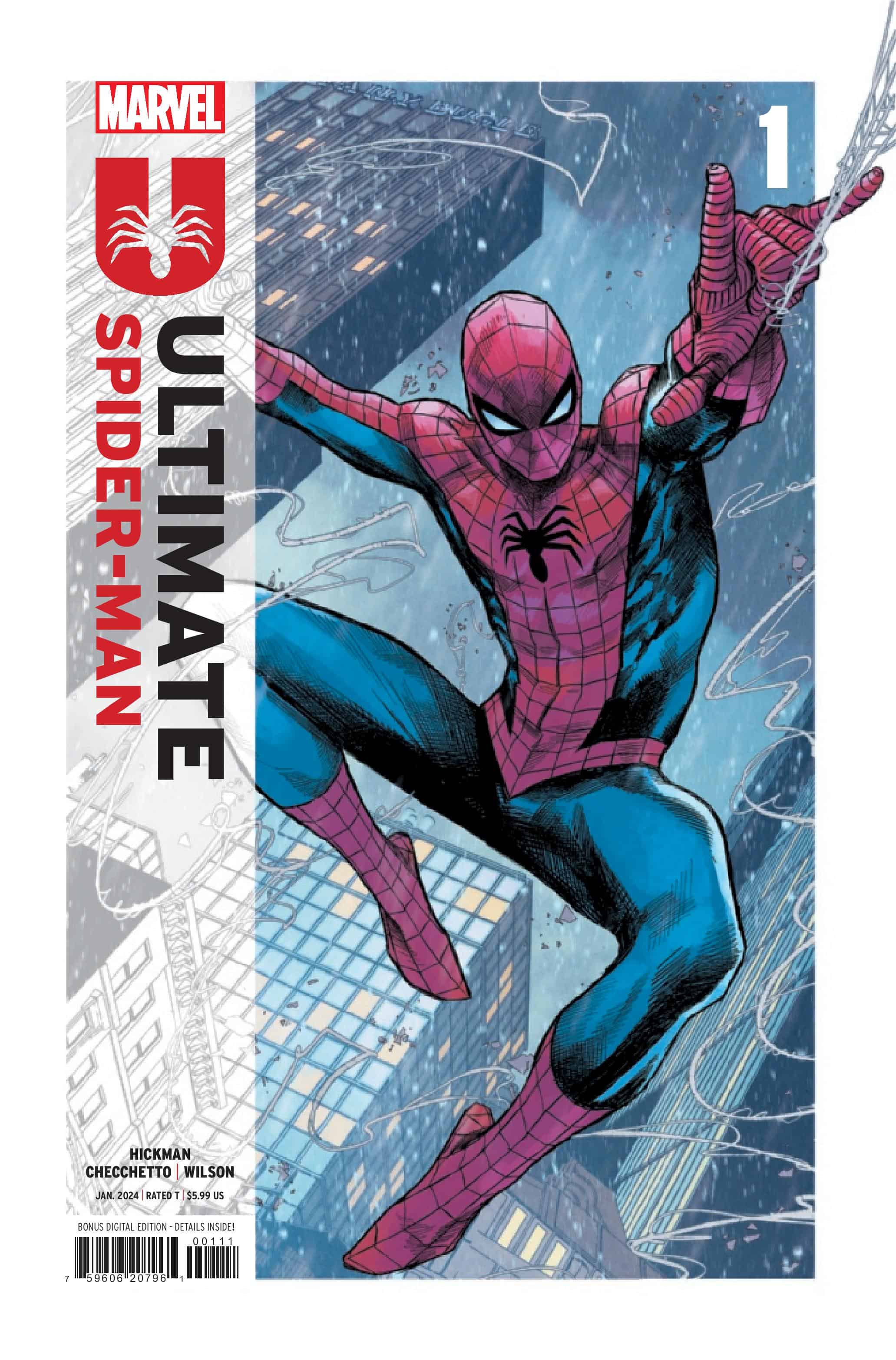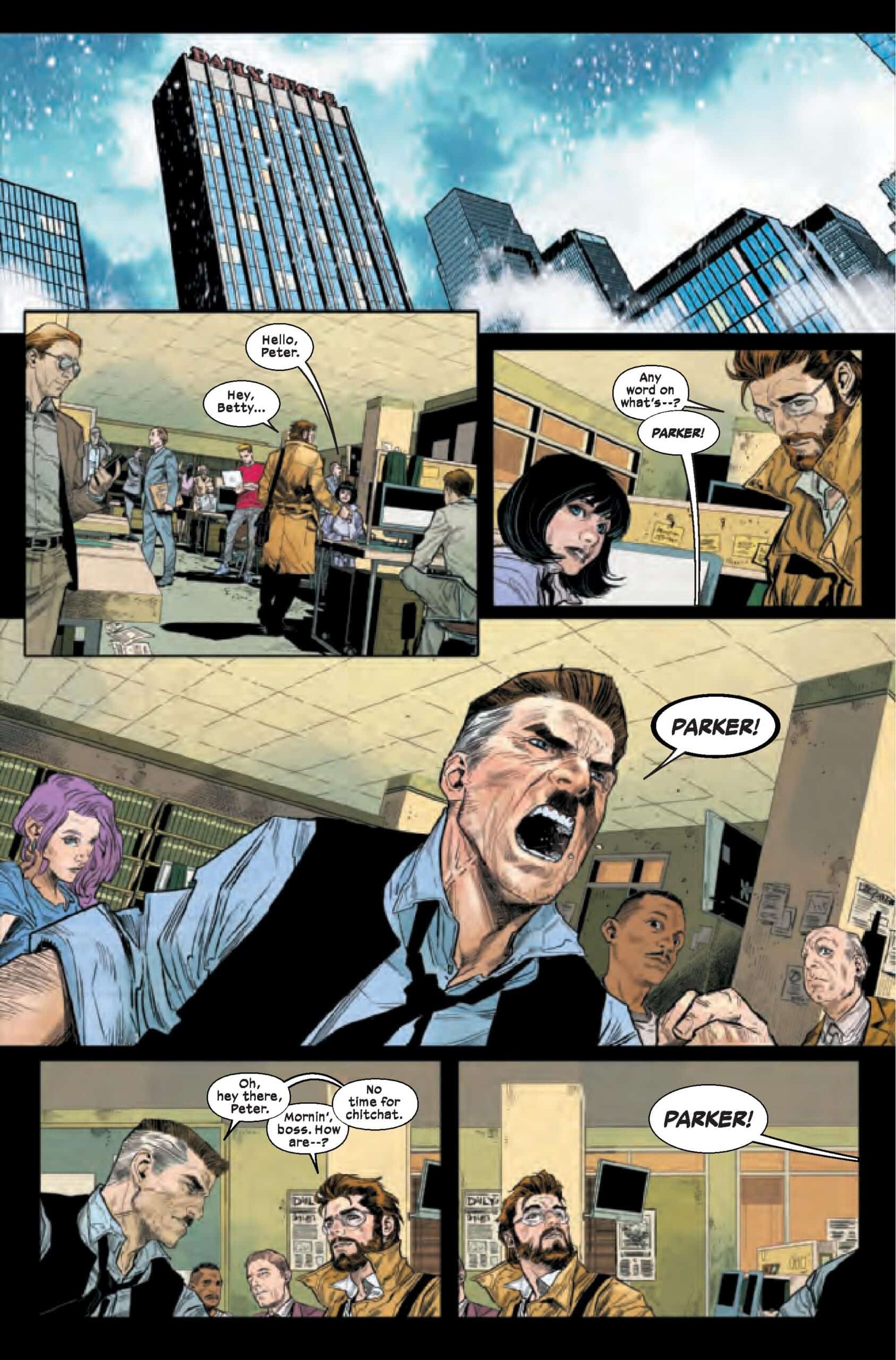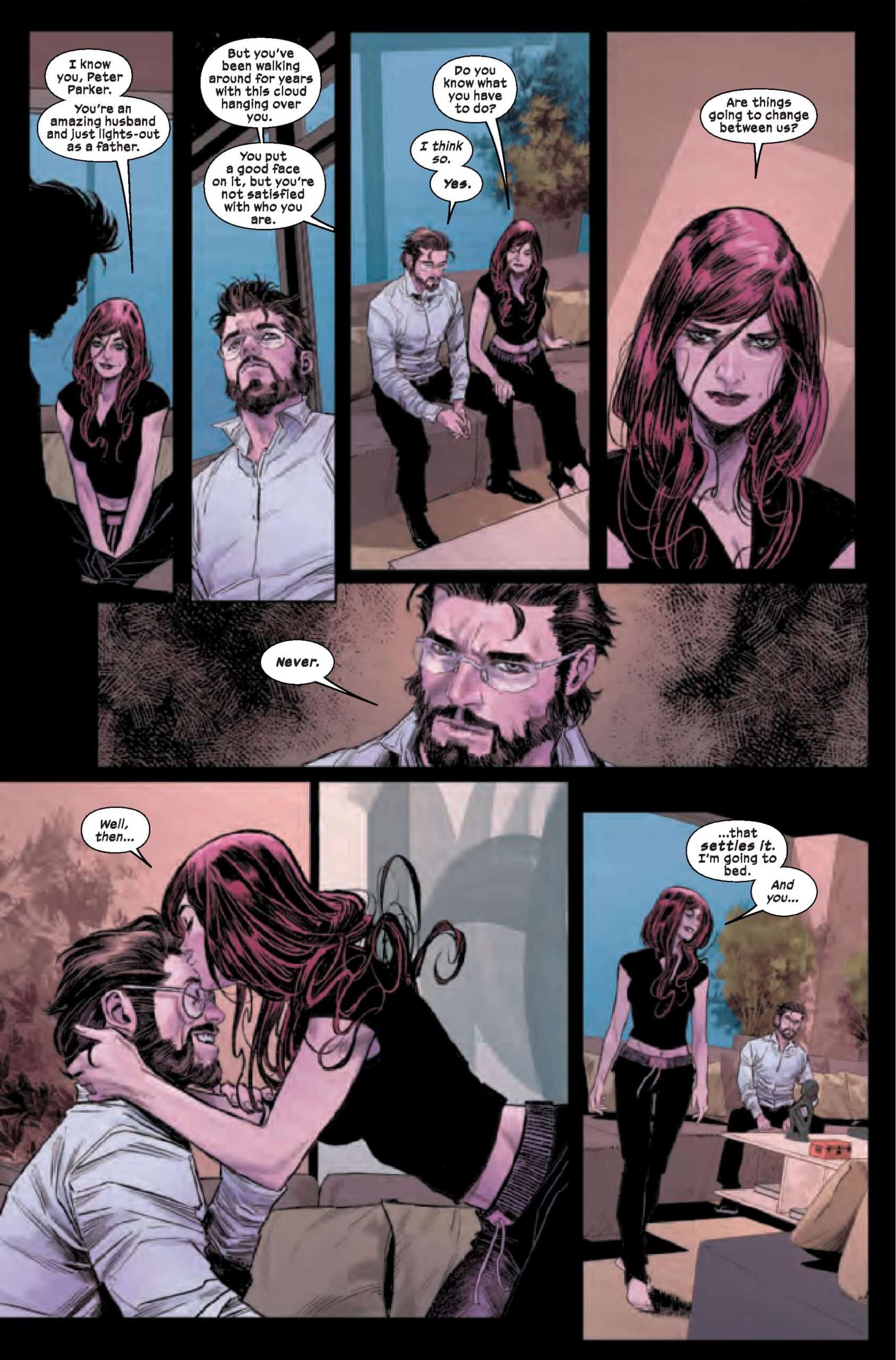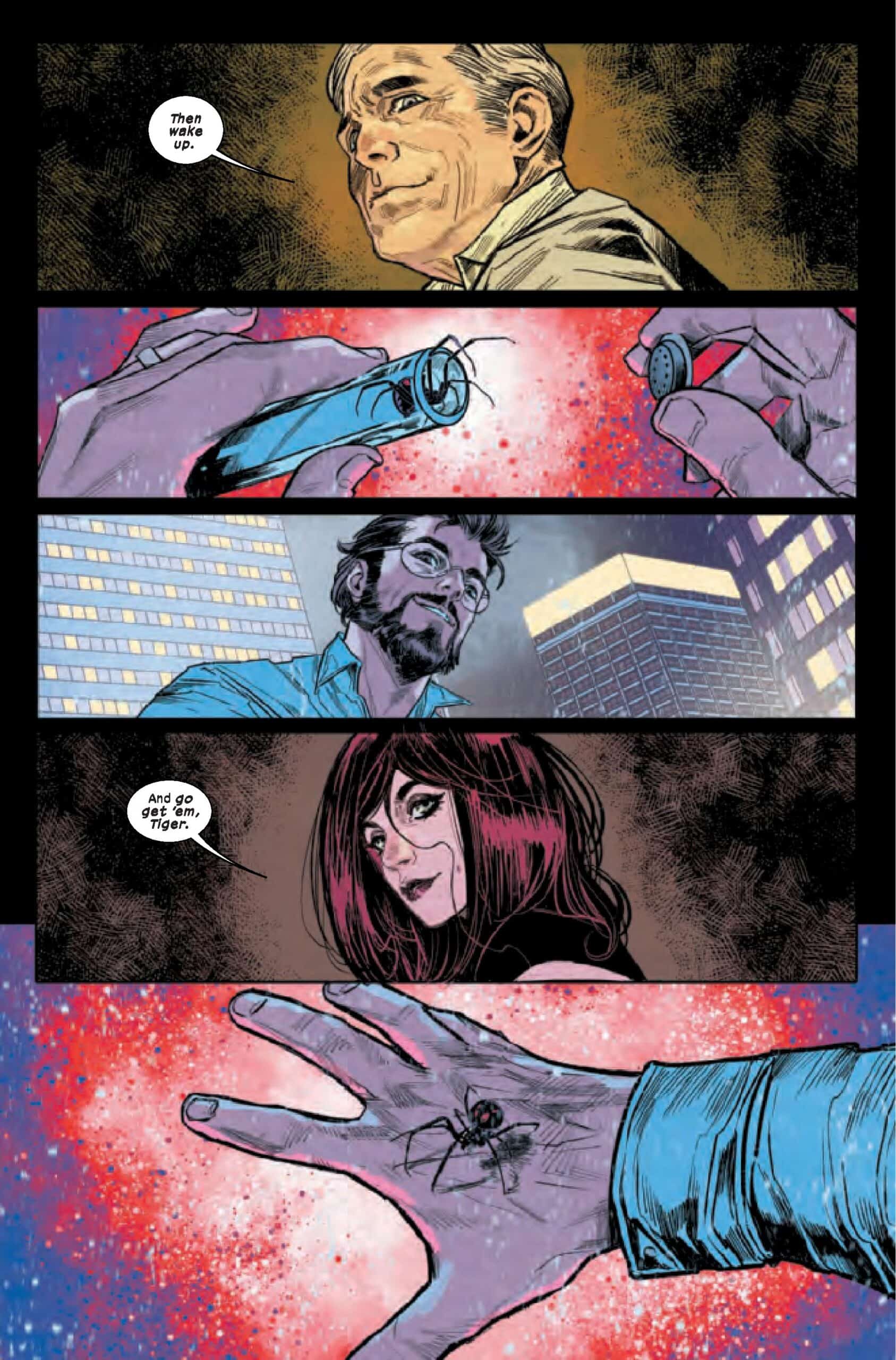Ultimate Spider-Man #1

Recap
THE NEW ULTIMATE SPIDER-MAN FOR A NEW ULTIMATE UNIVERSE! Visionary writer Jonathan Hickman (HOUSE OF X/POWERS OF X) and acclaimed artist Marco Checchetto (DAREDEVIL) bring you a bold new take on Spider-Man, with this, the debut title of the new line of Ultimate Comics! After the events of ULTIMATE INVASION, the world needs a hero…who will rise up to take on that responsibility? Prepare to be entangled in a web of mystery and excitement as the all-new ULTIMATE SPIDER-MAN comic redefines the wall-crawler for the 21st Century!
Review
Relaunches and reboots are a difficult thing in the context of modern superhero comics. After so many recycled plotlines, story beats, and attempts at distinction, it often feels impossible for originality to occur. The stroke of genius in the contemporary relaunch or reboot of property is the delicate balance of new and old. That is in large part what made the original Ultimate Spider-Man feel like such a breath of fresh air back in 2000. It was a Spider-Man comic that still felt like a Spider-Man comic that shed decades of continuity before it reinvented the wheel at its own pace. It then sprawled out to the Ultimate universe and built up its own (at times frustrating) amount of continuity.
Ultimate Spider-Man #1 – written by Jonathan Hickman with art by Marco Checchetto, colors by Matthew Wilson, and letters from VC’s Corey Petit – launches the first ongoing series of the new iteration of the Ultimate universe, established in Hickman and Bryan Hitch’s Ultimate Invasion. The original Ultimate line retold the origins of Spider-Man and then the rest of the Marvel universe in a modern (to 2000) setting. Here, this version of the line is a reaction to the Maker (the evil Reed Richards of the original Ultimate universe) stopping Peter Parker from being bit by the spider and then halting the origins of most other heroes.
At its core, this issue is an introduction into a world that imagines what if Peter Parker became Spider-Men well into his 30s. This is a confident, fully grown Peter that sports the aesthetic of a scruffy Ben Urich, has a functioning marriage/partnership with Mary Jane, and two children that are old enough to show some of the Parker antisocialness. Hickman takes the reader from scene to scene to flesh out this alternate reality, whether it be Peter’s family life, brief glimpses into his work at the Daily Bugle, or moments that break from canon.

The issue is a rich tapestry of continuity new and old, weaving Spider-Man lore to the remixed elements of Ultimate Invasion to make for the basis of a striking sandbox. Hickman’s writing does a lot of the heavy lifting for this but would be inherent without the perfect partner in Checchetto’s linework. Somehow, the artist has refined his pencils even more in the time following his seminal work on Daredevil with Chip Zdarsky. The panels and lines give off a striking cinematic quality that can make the breath in your throat hitch for a moment, blending reality and cartooning to a spectacular degree.
For those looking for a short review of the book without experiencing any spoilers, spot here and know this book is a masterpiece in the making. If the other Ultimate titles left a bad taste in your mouth, or read like a disappointment due to the reputation and previous work from its creators, throw that notion out when opening this comic. Looking at Hickman’s Marvel work, this feels closest to G.O.D.S. in terms of ethos, as the typically high-concept writer approaches the book with a grounded, character-driven approach that feels out of step with a body of work in the best possible way. Read this book if you are searching for a Peter Parker book that feels unique, visually stunning, and like a mature reflection of a character with over 60 years of publishing history.
WARNING: SPOILERS FOR ULTIMATE SPIDER-MAN #1 BELOW
In a narrative move that feels akin to the spirit of the original Ultimate Spider-Man by Brian Michael Bendis and Mark Bagley, this entire issue unfolds with no sign of Spider-Man. In the original run, one of the standout elements that made for such a compelling story built around Peter Parker first and foremost – and quite possibly a reason why his ultimate death in the run hits so hard – is the fact he does not appear in costume until the end of issue three. The creative team of that series knew that a key component of making Peter Parker work as a protagonist in an updated world required time and space to breathe and live before ever suiting up as a hero.
The reality of modern superhero comics is that time to grow is usually not a possibility. First issues need to hook readers in, even with a big-name property like Spider-Man. Hickman promises by the last page that a costumed (if not fully realized version) Peter is coming next month. Still, to devote the full issue (an oversized one at that) to a costumeless Peter living through his day-to-day lids is a remarkable feat that pays off immensely. Their love and trust between Peter and MJ is palpable in s short few pages, rendered beautifully. If there ever was a case to be made for why these two characters should be married, then this issue and the relationship on display would be exhibit A.

Another interesting wrinkle of this issue (and universe by extent) is the subtle changes and ripples cast by the Maker’s actions. Peter went to live with Aunt May and Uncle Ben at 15 rather than as a young child, Ben is still and works at the Daily Bugle, sharing a history with J. Jonah Jameson. Peter also works at the Bugle taking part in a family profession rather than pursuing science. It’s a radical departure from the established history but feels so natural in its construction, to the point of gumming up the story. Ultimate Jameson was a vital and ever-changing sea of complexity as a character, and it feels like a great continuation of that here. Checchetto and Hickman could rebrand this book into Ultimate The Pulse tomorrow and it would only make for a more exciting final product.
Ben and Jonah decide to strike out on their own, apart from the Bugle, after board member Wilson Fisk has pushed for a spin on the coverage of Stark’s bombing of New York. The same bombing (orchestrated by the Maker in Ultimate Invasion) was responsible for the death of Aunt May and Norman Osborn. Father Matthew Murdock, in a great nod to Checchetto’s time on Daredevil’s , is the one to offer words of comfort at the memorial service. The scene is heart-wrenching, draped in a blanket of snow as the Parkers, the remaining Harry Osborn, and others reflect on the tragedy. Wilson’s coloring captures the bitter colds of a New York winter but never loses the vibrant warmth of tones that seem to radiate off Murdock and his speech.

There are other brief flashes of these changes to reality, like Green Goblin’s appearance as he attacks Kingpin or the Bar With No Name serving non-supervillains. Checchetto renders these moments with equal depth, adding a layer of grit and grime to this version of a Marvel universe that can exist in tandem with the bleeding edge established in Hitch’s interpretation seen in Invasion. In a book with no action and all set-up and character work, there is never a dull or dragging moment, and that is entirely thanks to Checchetto’s cinematic panels and honest expressions, and the influx of mood and atmosphere that results from Wilson’s palettes.
A glimmer of possible doubt is interjected into this book as Hickman gives Peter a secret he’s hiding, but unlike a mainline title that dragged out the secrets of its lead character over a year, the issue plays its cards all at once. Tony Stark appeared to Peter via hologram to deliver a spider that would serve as a catalyst to remake Peter into Spider-Man and a techno-mumbo jumbo suit. Again, Hickman offers an interesting dynamic reversal with an adult Peter Parker and a teenage Tony Stark, even in the blip of a hologram interaction.

The tension in the scene, as the timeline catches up and the audience learns that Peter waited to ask MJ for input on taking up the hero role. In a dynamic montage from Checchetto, Peter’s decision to take up his spider-powers is solidified by MJ’s affirmation through the “Go get ’em tiger” line. It’s a stunning use of black pages blending into the stark whites of the present and makes for a thrilling sequence that is more exciting than most action sequences in modern comics. It is clear and concise, allowing the images to masterfully tell the emotional and character-driven story with only a flourish of text on the page.
That final sequence feels like a mission statement of this interpretation of Spider-Man. To trust the audience with a mature Peter Parker that feels familiar but different all at once, rendered gorgeously and written to be filled with genuine characters against the backdrop of a crazy universe. Reading this first issue was like a long exhale after the crazy ups and downs of the last decade-plus of Spider-Man media. It takes the best of all worlds, writing and continuity, art and colors, and delivers on all fronts. It’s almost a shame that this book wasn’t the kickoff to the new Ultimate universe, as it lays a foundation that hopefully the books following it will adopt in spirit and execution, filtered through the very unique perspectives of the creative teams.
Final Thoughts
If you asked me a year ago about Jonathan Hickman and Marco Checchetto delivering the best Spider-Man book of the decade, I would’ve been hesitant to say it was possible. The hope of a truly amazing Spider-Man story in comics felt like a bygone conclusion. But after seeing this issue in action, there is no doubt this run will be something spectacular. It feels so of the moment and timeless all at once, reacting to the modern comic landscape while charting forward something that feels like fertile ground. This is how a modern reboot is done, built around the essence of a character and refracted through the times, with a top-tier artist and colorist on board.
Ultimate Spider-Man #1: Face It Webheads, You Hit the Jackpot
- Writing - 10/1010/10
- Storyline - 10/1010/10
- Art - 10/1010/10
- Color - 10/1010/10
- Cover Art - 10/1010/10




